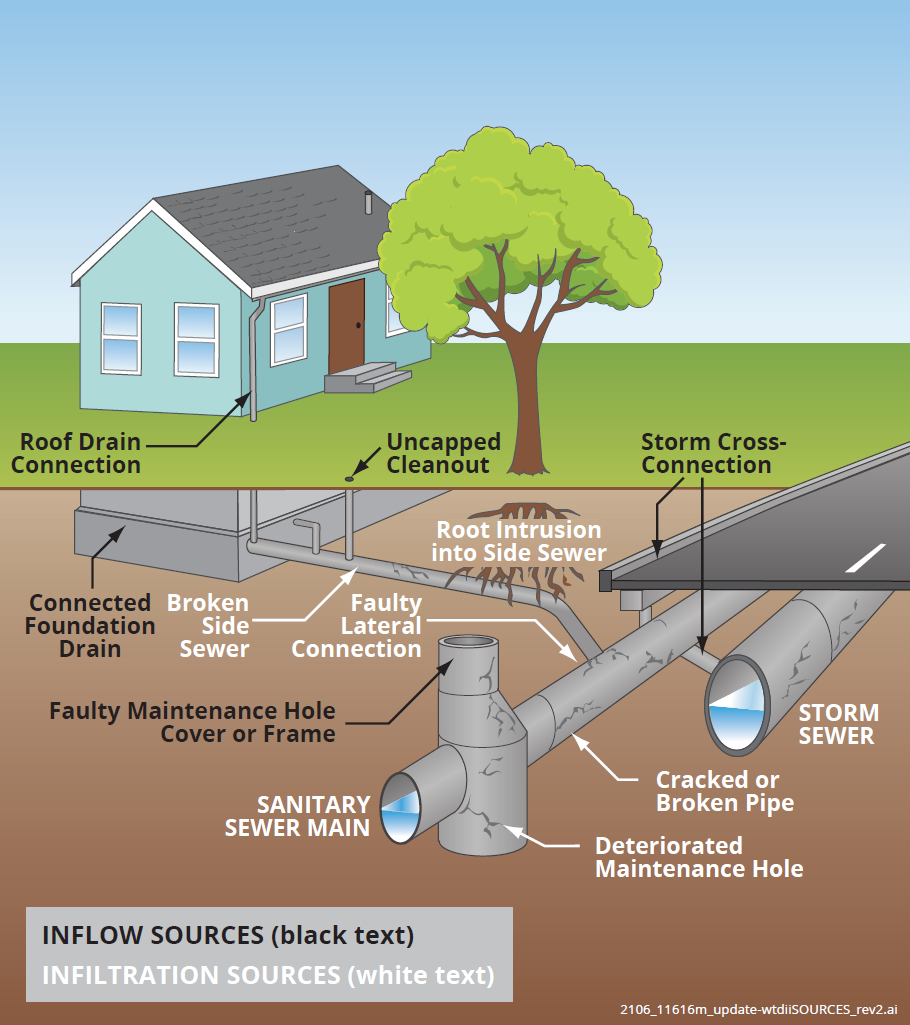Inflow and Infiltration (I&I)
Basically, I&I are ways that extra water gets into our wastewater system when it shouldn’t.
Inflow is water that gets in quickly, like rainwater going down stormwater drains, roof gutters, or sump pumps that are wrongly connected to the sewer.
Infiltration is water that slowly leaks in through cracks in old or damaged pipes underground – usually groundwater.
Our wastewater network is designed to handle only the wastewater we all produce. Stormwater inputs limit how much our wastewater pipes can hold. This extra water can overload the wastewater system, making it harder (and more expensive) to treat the water and can cause overflows into the environment. This places unnecessary pressure on our treatment plants.
What are we doing about it?
We are undertaking a multi-step approach to manage this issue.
- Network inspections:
- Flow monitoring. Individually placed flow monitors into selected manholes to record wastewater flows over a period of 6 -8 weeks. The recorded data provides important guidance into ‘catchment’ performance and provides I&I KPI’s to assess future works prioritisation.
- Using cameras to identify any leaking pipes
- Inspecting manholes for any defects
- Undertaking ‘smoke testing’ on the network. This process involves releasing a non-toxic, and odourless vapour into the system via a manhole and observing where it exits. This helps identify places where stormwater might be entering the wastewater system. The vapour used isn’t actual smoke – it’s the same safe substance used in theatrical smoke machines. It’s harmless to people, animals, and plants, won’t leave any stains or residue, and poses no fire risk.
- Focused remediation. Based on the results from step 1, TDC will carry out targeted repairs on the public network, and consult the community on recommended fixes required for the private network, to fix damaged pipes, manholes, and other inflow sources.
- Collaborative efforts: We will work closely with residents to address private stormwater connections that contribute to I&I.

The following Water NZ guide on Inflow and Infiltration is the best practice guide for controlling I&I: Microsoft Word - Volume 2 v2
What have we done?
We have started investigations in Eketāhuna, which are approximately 75% complete. This includes manhole chamber investigations, four flow monitors being installed to collect data, smoke testing being undertaken, and some CCTV work to assess known high flow I&I locations.
What are the next steps?
More focused investigations will take place on high priority catchment areas. A network remediation report from the vendor who has undertaken the investigations with suggestions on corrective actions and a proposal to repair I&I will be received.
What can you do to help fix these issues?
Please let us know if you spot any overflows from the wastewater network by contacting Council on 06 374 4080. Overflows can be caused by stormwater getting into the network or a system blockage, which requires immediate action.
Contact your local plumber or drainlayer if you find a defect on your property. They will determine if there is a problem on your property or in our network and advise of the relevant repairs.